From Flower to Fruit
The term ‘pollinator attracting’ is usually used to refer to plants that attract pollinators by providing food in the form of nectar, pollen or leaves. Pollinators, on the other hand, are animals like butterflies, bees and birds that help to transfer pollen from the male anther of a flower to a female stigma of a flower. This process is known as pollination and it is necessary to bring about the fertilisation of flowers to produce fruits.
There are two main types of pollinator-attracting plants, one being nectaring plants and another being host plants. Nectaring plants are plants with flowers that pollinators drink nectar from while host plants are those with animals feeding on them for survival. As for pollinators the more common few are bees, butterflies, sunbirds and bats, that all feed on nectar, and caterpillars which feed on the host plants they are on.
Here are seven commonly seen flora around us that you may not know are also important pollinator-attracting plants.
Pagoda Flower

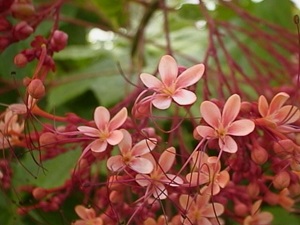
The Pagoda Flower (Clerodendrum paniculatum) is a large woody shrub with pink, orange-red or red trumpet-shaped flowers that occur in clusters, reminiscent of Chinese pagodas. This flower is a good focal point for biodiversity gardens or ornamental gardens and can be seen in many of our local gardens. It can be grown from seeds or stem cuttings.
The Pagoda Flower attracts many large butterflies that are drawn to its bright colors and nectar. Butterflies often perch on flower heads in search of nectar, collecting pollen on their legs. As they travel from flower to flower in their hunt for food, they aid in the pollination process as they transfer pollen from one plant to another.
Coral Vine

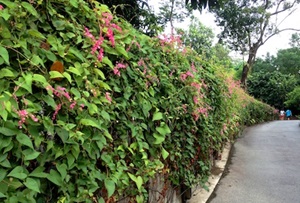
Photo credit: Pauline Tay and Jessica Teo
Most commonly spotted growing on trellises, the Coral Vine (Antigonon leptopus) is an ornamental vine that can be grown from seeds or stem cuttings. It produces beautiful pink flowers and often attracts honey bees, stingless bees and small butterflies.
Bees are usually attracted to a wider range of flowers than butterflies and they harvest both pollen and nectar from flowers to make honey. The honey bee is one our most important pollinator, performing over 80% of the pollination for all cultivated crops worldwide. In fact, statistically speaking, one out of every three to four bites of food we consume is thanks to honey bees as they play a crucial role in the pollination of crops that result in these food items.
Blue Snakeweed
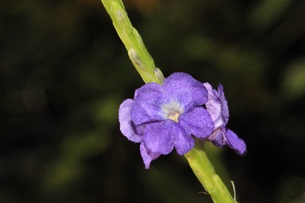
.jpg?h=203&w=305)
Flower of the Blue Snakeweed and a Cloak-and-Dagger Bee
Photo credit: Jessica Teo and Zestin Soh
The Blue Snakeweed (Stachytarpheta indica) is a small shrub with numerous small purple-blue flowers. It can be grown from seeds and is a good flowering border plant.
Like the Coral Vine, it attracts both bees and small butterflies. However, the species of bees it attracts is different. While the Coral Vine attracts honey bees and stingless bees, the Blue Snakeweed attracts Cloak-and-Dagger Bees (Thyreus spp.) and Blue-Banded Digger Bees (Amegilla spp.) There are more than 20,0000 species of pollinator bees worldwide; Singapore is home to about 100 species of bees.
Javanese Ixora

Flowers of the Javanese Ixora
The Javanese Ixora (Ixora javanica) is a large ornamental shrub with clusters of tubular red flowers. It attracts large and small butterflies and is a useful flowering border or hedge plant.
Butterflies can see colours and studies have shown that red is their favourite color, making it no wonder that they often visit the Javanese Ixora. Butterflies are also able to see ultraviolet lights, allowing them to distinguish flower markings easily so they can locate nectar as efficiently as possible.
This is a host plant for the Knight butterfly (Lebadea martha parkeri) is also attractive to caterpillars. Many species of caterpillars are host-specific and are very particular on the type of plants they feed on. As caterpillars will eventually transform into butterflies, a way to boost the population of butterflies in an area would be to grow more host plants like the Javanese Ixora!
Scarlet Spiral Flag

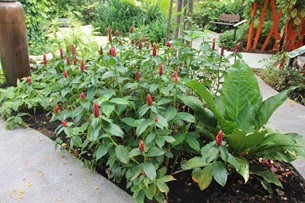
Photo credit: Mervyn Tan and Shi Biying
The Scarlet Spiral Flag (Costus woodsonii) is a large herbaceous shrub with prominent red cylindrical inflorescence. It can be grown from cuttings or propagated via division or aerial plantlets. It is a useful flowering border plant in many biodiversity gardens.
The Scarlet Spiral Flag attracts large butterflies and sunbirds. Its tubular shaped flowers are well suited for butterflies which use their long, straw-like proboscis to reach the nectar. Look out for sunbirds that often feed on this plant’s nectar.
Turk’s Turban
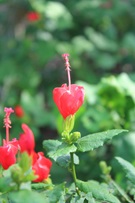
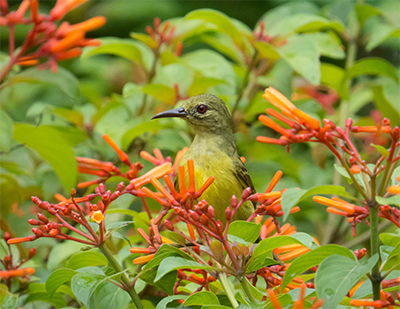
Flowers of the Turk’s Turban and an Olive-backed Sunbird
Photo credit: Shi Biying and Tok Yin Xin
The Turk’s Turban (Malvaviscus arboreus) is a large woody shrub with numerous attractive small red flowers. It can be grown from seeds or stem cuttings and can be used as the focal point in biodiversity gardens. The Turk’s Turban attracts sunbirds, which like butterflies have a very long tongue used to drink nectar.
Torch Ginger
.jpg?h=203&w=271)

Photo credit: Shi Biying and Tok Yin Xin
The Torch Ginger (Etlingera elatior) is a herb with very large prominent pink torch-shaped flowers. It can be grown from seeds or divisions. Immature flower buds are edible, while the mature flower head can be used in floral arrangements. It is a good screening plant for biodiversity gardens or shaded edible gardens.
It attracts sunbirds and fruit bats. Did you know that fruit bats also have an important role as pollinators and seed dispersers in many of our gardens? They help to ensure the regeneration and survival of many different plants.
Bats help to pollinate over 500 different types of plant species and are very efficient in this role. They not only deposit large amounts and large varieties of pollen genotypes on plant stigmas but they also are one of the longest distance pollen dispersers.
There are many benefits to growing pollinator-attracting plants, especially in the community gardens here in Singapore. These plants help to increase fruit yield from edible crops and offer a habitat for local biodiversity. This also makes the areas these plants are grown in much more interesting as it creates more chances for wildlife watching.
Children can test their knowledge on pollinators with this crossword! There are other worksheets specially created for pre-school up to secondary school level children, for them to work on activities such as creating a pest potion or identifying characteristics of drought-resistant plants. Click here for more information.
Learning More
If you are heading to our green spaces, do the right thing and be socially responsible. Maintain a safe distance from other park goers and keep to not more than five person in a group, with no intermixing between groups. Always wear a mask except when you are engaged in strenuous exercise or when consuming food, drink or medication.
Do check out the visitorship levels of our parks using our safe distancing portal before you head down and avoid the ones with high visitorship. Learn about some simple do’s and don’ts when visiting our Nature Reserve and Nature Parks here.
Visit NParksSG, our refreshed YouTube Channel that serves as a one-stop repository for close to 300 video resources. It also provides you a platform for existing and future digital outreach including DIY gardening and related crafts, virtual tours of our green spaces, and livestream events.
For more information about the flora and fauna found in Singapore, please visit NParks Flora and Fauna Web.
If you like what you read, follow us on Facebook, Instagram and Telegram to get the latest updates.
Text by Melissa Lee


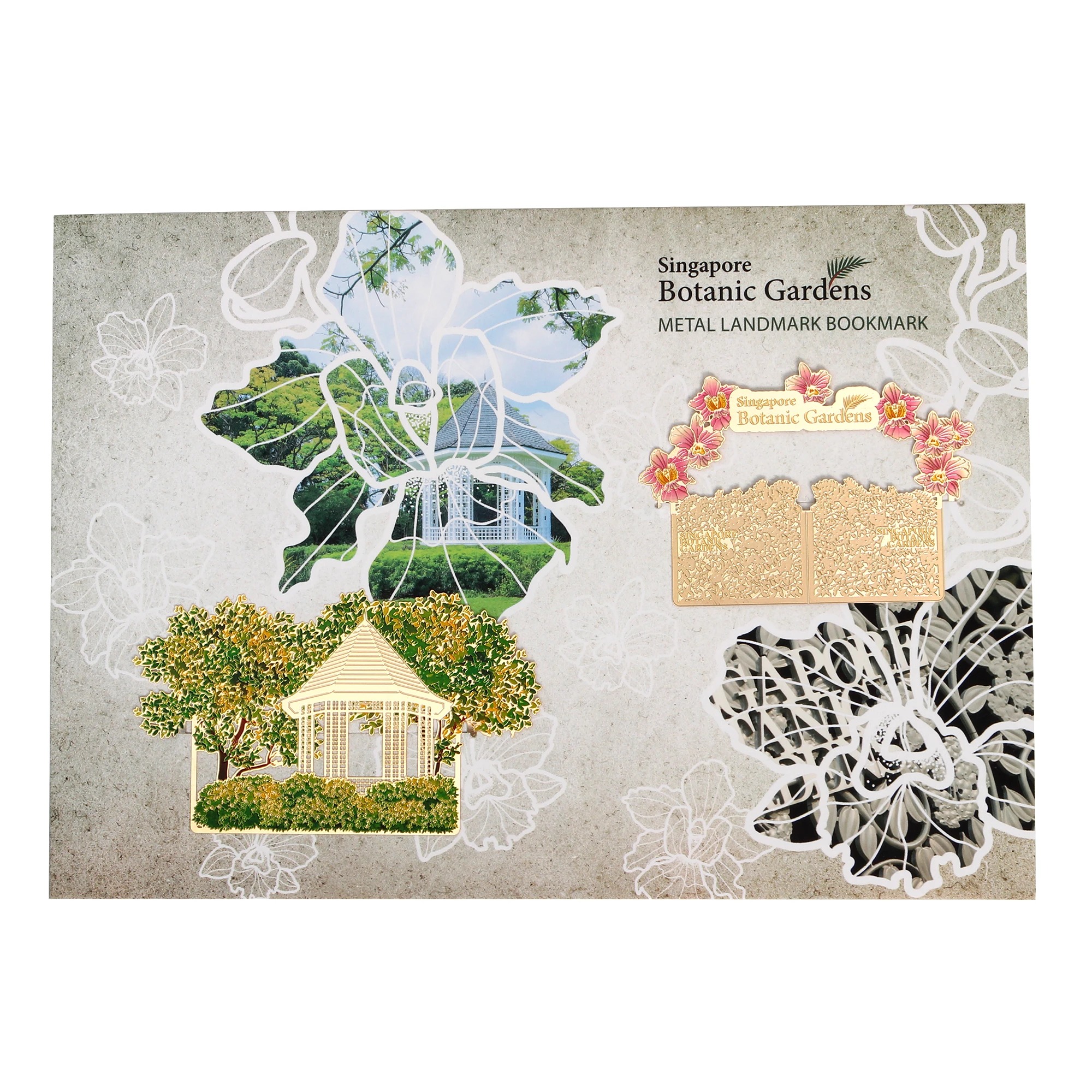
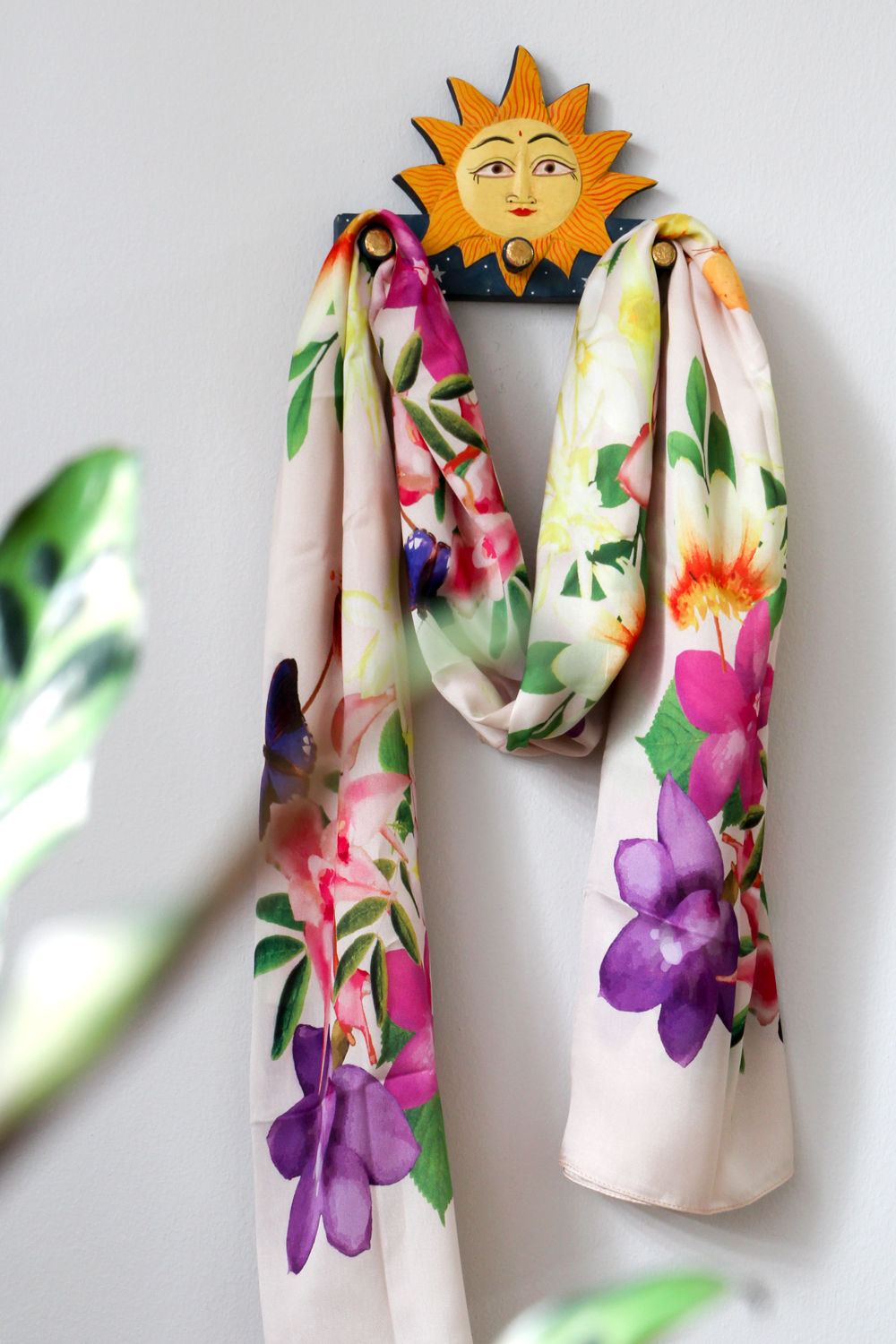

Have views or comments on this article? Let us know via this form. If you would like to give us feedback on any other areas relating to our parks and gardens, please submit via https://www.nparks.gov.sg/feedback